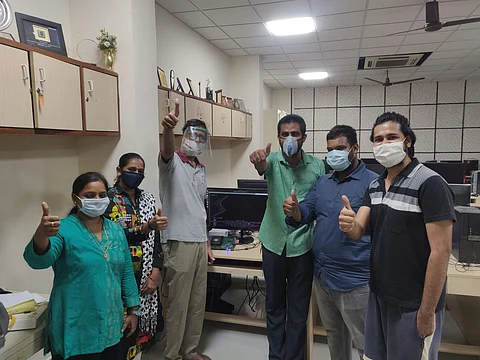

Researchers at the Reconfigurable Intelligent Systems Engineering (RISE) Group, Department of Computer Science and Engineering, Indian Institute of Technology Madras, successfully developed a chip (their third one), a microprocessor and system on chip called Moushik. Completely made in India, the microprocessor is open-sourced and can be accessed by anyone for academic purposes or from the industry.
Funded by the Ministry of Electronics and Information Technology, Government of India, the microprocessor successfully captures Indian design specifics and caters to the country's requirements. Prof Kamakoti Veezhinathan from the RISE Group says that Moushik can be used to advance the Smart City initiative implemented by the government. "Moushik can be interfaced with various sensors — such as pollution monitors, movement detectors, cameras and so on — which are integral devices that will be part of a smart city solution. We estimate several millions of these devices to be available in the market over the next few years," says Kamakoti.
However, it is not just useful to improve our cities, but can also be used in various other sectors like smart cards, including credit cards, ID cards, debit cards, travel cards for Metro trains and driving licenses. It can also be used in Electronic Voting Machines (EVMs) and in Office Management Systems for attendance, surveillance cameras and safe locks. Other management systems like Personalised Health Management Systems can also benefit from such a microprocessor. Moushik can also help operate consumer electronics goods, including but not restricted to washing machines and water pump monitoring systems.
Speaking about how the microprocessor was developed and conceptualised, Kamakoti says, "The current microprocessor ecosystem in the world thrives on architectures that are patented and licensed. IIT Madras chose to take up an open source Instruction Set Architecture (ISA) (which is the set of instructions that a processor can execute) called RISC-V and develop microprocessors around this open source ISA." Kamakoti and his team then worked to make the microprocessor compatible for use in IoT devices and in high performance processors.
The microprocessor was entirely designed at IIT Madras. However, it was manufactured at Semiconductor Laboratory, Chandigarh, says Kamakoti. "The boards were designed at IIT Madras and fabricated at Bengaluru," he adds. About 15 people, including students, project staff and faculty worked on Moushik. While the microprocessor was indigenously made, some parts of it had to be imported. Kamakoti explains, "The design was done using an open source tool named Bluespec. The Computer Aided Design (CAD) tools for making the mask of the design is proprietary and had to be sourced from multi-national companies. The CAD tools used for designing the motherboard is also proprietary and had to be sourced from multi-national companies. In addition, some of the passives in the motherboard had to be imported as no such fabrication facilities are available in India." The mask and the motherboard, however, were completely made in India. The components were also assembled on the motherboard indigenously.
IIT Madras has previously also designed such microprocessors. This is the third one in the Shakti family, which have provided an open source platform that has allowed researchers, developers and the like to make enhancements, add extensions and explore their ideas, says Kamakoti. "With the growing digital era, each application domain needs its own domain-specific processor, and such efforts are perhaps the best way to make it happen," adds Kamakoti.
